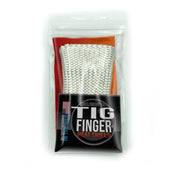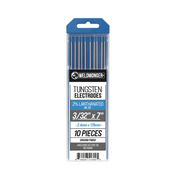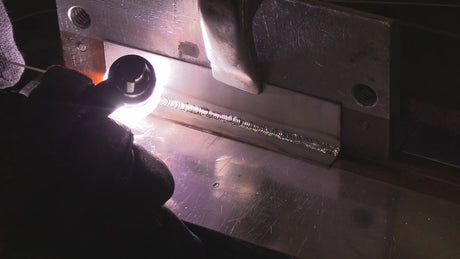Understanding the AC Balance Setting on your TIG welder helps you get the most out of your machine.
- Understand the concept: Steels are tig welded on Direct Current Electrode negative (DCEN) because provides a pinpointed arc with good penetration. But the cleaning action that is needed for TIG welding aluminum only happens with Electrode positive (EP). Alternating current is a mix of EN for penetration and EP for cleaning action. AC balance is usually represented as a percentage. For example, a balance setting of 70% EN means that the electrode spends 70% of the time in the EN cycle and 30% in the EP cycle during each AC cycle.
- Determine the appropriate AC balance: The optimal balance setting depends on the type and thickness of the aluminum being welded, as well as personal preference. A higher EN percentage (e.g., 70-80%) provides better cleaning action, removing oxides and contaminants from the surface. A higher EP percentage (e.g., 30-20%) improves penetration.
- Check your welder's manual: Different TIG welders have different methods for setting the AC balance. Consult your welder's manual to find specific instructions for adjusting the AC balance. Some machines have a dial or control panel setting for adjusting the balance, while others may require navigating through menus. And some AC balanced knobs are made to indicate the % level of cleaning action (EP) while others are opposite and indicate the % level of penetration (EN). A quick and easy way to verify which way your AC balance is oriented is to set it to maximum either way. If your electrode tip rounds and balls up, that is max cleaning (EP). If not then that settings is max penetration (EN)
- Set the AC balance: Once you have determined the AC balance orientation, adjust it to around 65% EN for penetration and make small adjustments from there based on your welding requirements.
- Practice and fine-tune: Practice welding on scrap aluminum pieces using different AC balance settings to observe the effects. Pay attention to the cleaning action, appearance of the weld bead, and penetration. Refine the balance setting based on the results you achieve until you find the optimal balance for your specific welding needs.
- Remember that cup size and argon flow rate also affect the cleaning action pattern because the cleaning action will typically only go where there is complete argon coverage.
- AC balance is just one of the variables that influence the welding process. Other parameters like current, arc length, and travel speed also play crucial roles. Take the time to experiment and develop your skills to achieve the best results with your TIG welding projects.






